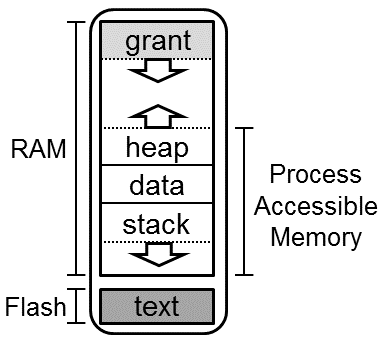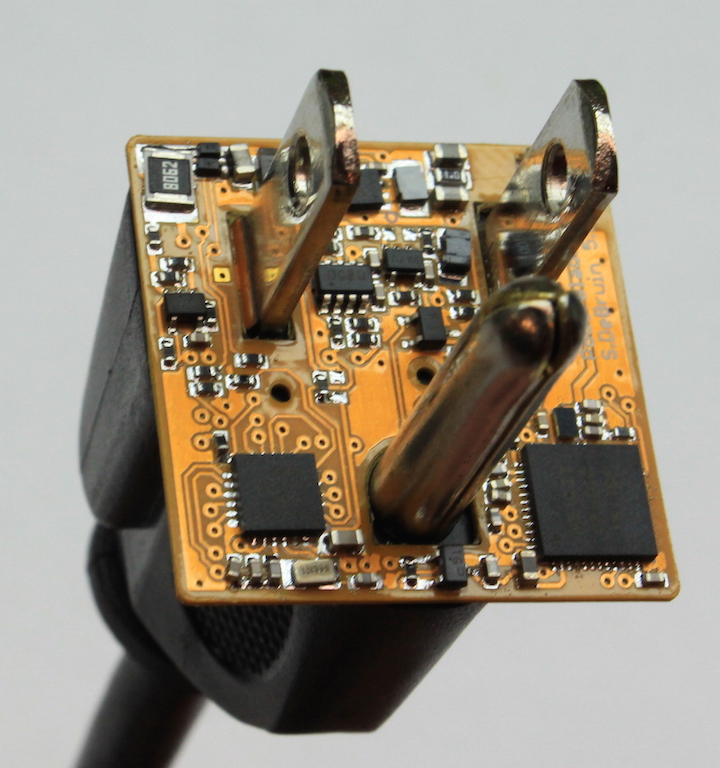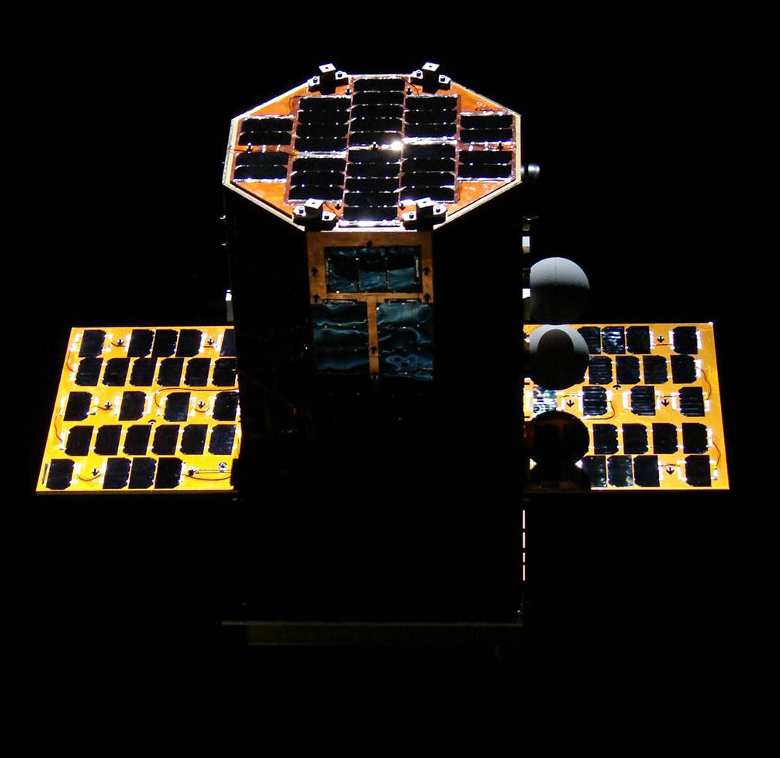Projects

|
My research covers several systems areas including networking and operating systems, but my specialty is embedded systems. It is the kind of field where you debug software with an oscilloscope. Particularly, I work on resource-constrained embedded hardware, software, and networking. Of a particular interest to me are networking protocols such as Bluetooth Low Energy, LoRaWAN, and LTE-M, which are capable of supporting various Internet of Things communication needs. I am also focused on operating systems for embedded systems through the Tock project. During grad school I was part of Lab11 and advised by Prabal Dutta. An extremely important part of publicly funded research is making results available to the public. I strongly believe in open-access to research and you can find all my papers provided on this website and all of the software and hardware for my grad school projects on Github. |
Active Projects
Tock

|
Embedded operating systems have traditionally been limited to libraries that abstract hardware and implement common utilities. These systems provide only limited mechanisms, if any, to ensure the safety of drivers and isolate applications. An answer to this need is Tock, a safe, multitasking operating system for memory constrained devices. It is written in Rust, a type-safe systems language which is used to enforce safety of of kernel components. Tock allows applications, which can be written in any language, to be compiled and loaded independently from the kernel. Tock is an open source project in use by research groups at several universities, multiple companies, and independent engineers all over the world. The project is still under active development and we welcome anyone interested to participate. |
This work has led to multiple workshop papers and conference papers at SOSP'17 and SOSP'25.
Abstract: (SOSP'17)
Low-power microcontrollers lack some of the hardware features and memory
resources that enable multiprogrammable systems. Accordingly,
microcontroller-based operating systems have not provided important features
like fault isolation, dynamic memory allocation, and flexible concurrency.
However, an emerging class of embedded applications are software platforms,
rather than single purpose devices, and need these multiprogramming features.
Tock, a new operating system for low-power platforms, takes advantage of
limited hardware-protection mechanisms as well as the type-safety features of
the Rust programming language to provide a multiprogramming environment for
microcontrollers. Tock isolates software faults, provides memory protection,
and efficiently manages memory for dynamic application workloads written in any
language. It achieves this while retaining the dependability requirements of
long-running applications.
Abstract: (SOSP'25)
Tock began 10 years ago as a research operating system developed by academics
to help other academics build urban sensing applications. By leveraging a new
language (Rust) and new hardware protection mechanisms, Tock enabled
“Multiprogramming a 64 kB Computer Safely and Efficiently”. Today, it is an
open-source project with a vibrant community of users and contributors. It is
deployed on root-of-trust hardware in data-center servers and on millions of
laptops; it is used to develop automotive and space products, wearable
electronics, and hardware security tokens—all while remaining a platform for
operating systems research. This paper focuses on the impact of Tock’s
technical design on its adoption, the challenges and unexpected benefits of
using a type-safe language (Rust)—particularly in security-sensitive
settings—and the experience of supporting a production open-source operating
system from academia.
[SOSP'25 Conference Paper] [SOSP'17 Conference Paper] [APSys'17 Workshop Paper] [PLOS'15 Workshop Paper]
Low-Power Wide Area Networking
The domain of low-power, wide-area networking is becoming increasingly important to the Internet of Things. A number of unlicensed band protocols, such as LoRaWAN, Sigfox, Weightless, and WiFi HaLow have been developed to solve the needs of energy-constrained, low-bandwidth, widely-deployed devices. These networks use a range of techniques at the physical and link layers to provide communications. Meanwhile, cellular technologies are also entering this space with LTE-M and NB-IoT rolling out globally. Our researcher focuses on how well these technologies will support future application needs and how IoT devices will need to adapt in order to make use of them.
This work initially resulted in an overview of the existing technologies and their applicability to various applications created in collaboration with a project with Ford.
Further efforts led to a paper presented at MobiCom'19 which demonstrates the need to improve unlicensed LPWANs if they are to compete with cellular technologies.
[MobiCom'19 Conference Paper] [MobiCom'19 Presentation]
Inactive Projects
BLE Networking
Bluetooth Low Energy (BLE) is an ubiquitous low-power networking technology. It is already available in consumer devices, including all smartphones, and is frequently used in Internet of Things devices for simple communication capabilities. However, when it comes to sensor networks, BLE has seen little use. BLE advertisements—short, periodic, broadcast messages—seem to be a potentially useful medium for data transport, however, especially for densely deployed devices. We find that academic literature has not rigorously studied BLE advertisement networks in theory or practice, and are currently exploring its use.
This work has so far resulted in a related workshop paper on the potential for smartphone data muling over BLE advertisements at HotMobile'19
This work also resulted in a conference paper on BLE network analysis and measurement at EWSN'22.
Signpost

|
The growing field of city-scale sensing hold exciting promise. We look forward to the new insights into the health and activities of our cities and towns that can be gained through wide-area deployed sensing efforts. A key challenge to these efforts, however, is that the application idea isn't the hard part. Instead, the challenge for researchers is often all the other things that go into real-world deployments: power, networking, storage, and weatherproofing. These engineering challenges take time away from the core research goal and raise the level of effort required to perform even simple tests of city-scale sensing ideas. Signpost provides a solution this problem. It is a modular city-scale sensing platform that provides resources to arbitrary sensors that can be attached to it over a simple hardware and software interface. Signpost is energy-harvesting through a solar panel, easily mountable on ubiquitous city sign poles, waterproof, and supports applications by providing communications, storage, location, time, and data processing capabilities. A key design challenge for Signpost is the ability to support multiple sensor modules by developers with unaligned, and possibly opposing desires. In response, Signpost provides robust hardware isolation in terms of energy use and communication capability for hosted application modules. |
This work has led to multiple workshop and demo papers, a magazine article, and a conference paper at IPSN'18.
Abstract:
City-scale sensing holds the promise of enabling a deeper understanding of our
urban environments. However, a city-scale deployment requires physical
installation, power management, and communications—all challenging tasks
standing between a good idea and a realized one. This indicates the need for a
platform that enables easy deployment and experimentation for applications
operating at city scale. To address these challenges, we present Signpost, a
modular, energy-harvesting platform for city-scale sensing. Signpost simplifies
deployment by eliminating the need for connection to wired infrastructure and
instead harvesting energy from an integrated solar panel. The platform
furnishes the key resources necessary to support multiple, pluggable sensor
modules while providing fair, safe, and reliable sharing in the face of dynamic
energy constraints. We deploy Signpost with several sensor modules, showing the
viability of an energy-harvesting, multi-tenant, sensing system, and evaluate
its ability to support sensing applications. We believe Signpost reduces the
difficulty inherent in city-scale deployments, enables new experimentation, and
provides improved insights into urban health.
[IPSN'18 Conference Paper] [GetMobile 2018 Magazine Article] [IPSN'18 Demo Paper] [ENSsys'17 Workshop Paper] [SenSys'16 Demo Paper]
Gateway
The many Internet of Things devices we work on have a common need: the ability to communicate with the internet. They need a gateway that will bridge their low-power communication methods, such as Bluetooth Low-Energy, with services either local or cloud-based. The gateway also acts as a natural host for applications that want to directly interact with local devices. We developed a gateway architecture for our own use in various projects that could collect packets sent over a variety of low-power networks including BLE and 802.15.4, translate those packets into a human-readable JSON format, host local applications that interact with the sensor data, and upload the data to cloud services.
The key idea of this gateway project is that devices should be automatically supported by the gateway by providing their own translation code. In our architecture, devices share a URL with the gateway that hosts a Javascript parser capable of translating that device's packets into a JSON structure. The gateway automatically downloads these parsers, runs them in a sandbox on the incoming packets, and publishes the resulting data over a local MQTT service. In this way, the gateway can exist agnostic to the devices it services, and device manufacturers can ensure that their devices are supported entirely through their own efforts. We have used this gateway design to successfully collect data from several deployments of other lab projects, such as Triumvi and PowerBlade.
Abstract: The gateway is a key component for sensor network deployments and the Internet of Things. Sensor deployments often tend towards low-power communication protocols such as Bluetooth Low Energy or IEEE 802.15.4. Gateways are essential to connect these devices to the Internet at large. Over time though, gateways have gained additional responsibilities as well. Sensors expect gateways to handle device-specific data translation and local processing while also providing services, such as time synchronization, to the low-power device. As a centralized computing resource, the gateway is also an obvious location for running local applications which interact with sensor data and control nearby actuators. Today, vendors and researchers often create their own device-specific gateways to handle these responsibilities.
We propose a generic gateway platform capable of supporting the needs of many devices. In our architecture, devices provide a pointer, such as a URL, to descriptions of their interfaces. The gateway can download the interface descriptions and use them to determine how to interact with the device, translating its data to a usable format and enabling local services to communicate with it. The translated data is provided to services including user applications, local logging, device status monitoring, and cloud applications. By simultaneously supporting communication with many sensors, our gateway architecture can simplify future sensor network deployments and enable intelligent building applications.
PowerBlade

|
With an increasing number of miscellaneous electrical loads used in residential and commercial buildings, understanding electricity usage patterns requires metering every load. Existing plug-load power meters are bulky, power-hungry, and require manual user interaction to record energy use. PowerBlade is a new take on power meter designs that has an essentially 2D form factor. Loads literally plug-through it and into the outlet. This means PowerBlade can stay attached to the load plug itself, truly monitoring an individual device, rather than an outlet. Designing a functional power meter with extreme volume constraints requires rethinking the traditional power meter design choices. PowerBlade employs a simplified AC power supply design, a novel method for noninvasively sensing current draw, and a Bluetooth Low-Energy radio to transmit data to nearby smartphones. This work was published and demonstrated at SenSys 2015. |
Abstract:
We present PowerBlade, the smallest, lowest cost, and lowest
power AC plug-load meter that measures real, reactive and apparent power, and
reports this data, along with cumulative energy consumption, over an
industry-standard Bluetooth Low Energy radio. Achieving this design point
requires revisiting every aspect of conventional power meters: a new method of
acquiring voltage; a non-invasive, planar method of current measurement; an
efficient and accurate method of computing power from the voltage and current
channels; a radio interface that leverages nearby smart phones to display data
and report it to the cloud; and a retro power supply re-imagined with vastly
lower current draw, allowing extreme miniaturization. PowerBlade occupies a
mere 1" × 1" footprint, offers a 1/16" profile, draws less than 180 mW itself,
offers 1.13% error on unity power factor loads in the 2-1200 W range and
slightly worse for non-linear and reactive loads, and costs $11 in modest
quantities of about 1,000 units. This new design point enables affordable
large-scale studies of plug-load energy usage—an area of growing national
importance.
[SenSys'15 Conference Paper] [SenSys'15 Demo Paper]
This work was also included in an IEEE Pervasive journal paper covering the topic of perpetual sensing in the built environment.
[IEEE Pervasive 2016 Journal Paper]
Wearabouts
"Who's in lab?" This is a harder question to answer than it may seem. Determining the location of individuals indoors remains an unsolved problem.
The goal of Wearabouts is to perform room-level localization of individuals. The expected output would include each discovered individual and which room they have been found in. An important piece of the design is to not require individuals to carry any extra devices. We want to use only things they already carry and characteristics of who they are to discover them. Currently, the system uses Bluetooth Low-Energy advertisements from devices like Fitbits to discover people and adds information from RFID door entry and smartphone WiFi connections to increase its accuracy.
Terraswarm Annual Meeting 2014:
[Poster]
Terraswarm Localization Workshop 2014:
[Poster]
[Presentation]
Thermes
Taking the Monjolo Principle of energy-harvester as a sensor, we created a new platform with a heat harvesting thermoelectric generator. This work was published at ENSsys 2014.
Abstract:
Fine-grained energy metering in homes and buildings provides a promising
technique for addressing the unmaintainable energy consumption levels of
worldwide buildings. Metering electricity, lighting, natural gas, HVAC,
occupancy, and water on a per appliance or room basis can provide invaluable insight
when trying to reduce a building's energy footprint. A myriad of sensor designs
and systems collect data on particular building aspects, but are often hampered
by installation difficulty or ongoing maintenance needs (like battery
replacement). We address these common pitfalls for water and heat metering by
developing a small, energy-harvesting sensor that meters using the same
thermoelectric generator with which it powers itself. In short, the rate at which
the harvester captures energy is proportional to the heat production of the
monitored appliance or pipe and this relationship allows us to estimate energy use
simply based on the sensor's ability to harvest. We prototype our sensor in a
bracelet shaped form-factor that can attach to a shower head pipe, faucet, or
appliance to provide local hot water or heat metering.
[ENSsys'14 Workshop Paper] [ENSsys'14 Presentation]
Green Lights Forever
Starting as a course project in EECS 588, a group of three other students and I investigated the security of an intelligent traffic light system in the United States. This work was published at WOOT'14 and received widespread media attention.
Abstract:
The safety critical nature of traffic infrastructure requires that it
be secure against computer-based attacks, but this is not always the case.
We investigate a networked traffic signal system currently deployed in the
United States and discover a number of security flaws that exist due to
systemic failures by the designers. We leverage these flaws to create attacks
which gain control of the system, and we successfully demonstrate them on the
deployment in coordination with authorities. Our attacks show that an
adversary can control traffic infrastructure to cause disruption, degrade
safety, or gain an unfair advantage. We make recommendations on how to improve
existing systems and discuss the lessons learned for embedded systems security
in general.
[WOOT'14 Workshop Paper] [WOOT'14 Presentation]
Selected News Articles:
[MIT Technology Review]
[New Scientist]
[Washington Post]
[NBC Chicago]
NSF Fellowship
In my 2013 I applied to the NSF Graduate Research Fellowship Program and was lucky enough to be awarded a fellowship. This was the first year with the new essay rules that reduce the application to two essays, Background & Previous Research and Proposed Research, a total of five pages. Below, I have provided my essays as well as the reviews I received as examples for other students applying to the program.
[Background and Previous Research] [Proposed Research] [Reviews]
SensEye
The eyes are the window to the soul. What could a computer do if it knew what you were looking at?
SensEye is an attempt to start answering that question. Low-power real-time gaze detection is finally within our grasp. Using a microcontroller running uCLinux and an FPGA, we can pull real-time images from two small cameras, one facing inwards towards the eye and one facing outwards towards the world. This data can be used to determine which object in view you are observing. Imagine a world where your car would warn you if you were not paying attention, where your phone would have interesting information available on the item you were just observing, and where you could track how you actually spend your time each day.
In order to achieve this goal, our system has to be both energy efficient and low cost. We hope to create such a system and distribute it to software developers in order to spur innovation.
Oculus-ASR

|
During my undergraduate studies at Michigan Tech I was part of Areospace Enterpise, a group of students building a nanosatellite as part of the University Nanosatellite Program. We won the 6th iteration of the competition and have been finalizing flight hardware. The mission is set to launch using the Falcon Heavy on mission STP-2. The purpose of the satellite is to help test United States' space situational awareness capabilities. Using spectroscopy, the attitude and configuration of a satellite can be determined if it is first characterized on the ground. Oculus-ASR has been characterized and has the ability to control and observe its orientation and configuration. The Air Force will use our satellite to calibrate their algorithms and enable new advances in space awareness. I presented an overview of the project at the 2013 JPL cubesat symposium. |